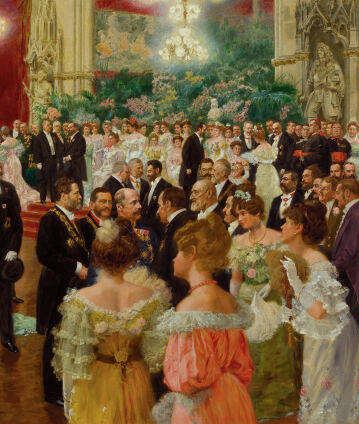Symphonic dances: Waltzes in Philharmoniker concerts

The famous Austrian Strauss dynasty were not the only ones who could write wonderful music in three-four time. Composers such as Tchaikovsky, Richard Strauss and Maurice Ravel also contributed to the waltz, taking it out of the ballroom and to the concert halls and opera stages. Whether lilting or slow, the original Viennese or shrouded in Finnish melancholy, our selection presents you with works that shed light on the dance in very different ways.
“Unfortunately not by me”, wrote Brahms next to a few bars he had noted down on a napkin. The musical idea that made him so envious was the waltz An der schönen blauen Donau by Johann Strauss II. Of course, Brahms had nothing to be ashamed about: he found his very own voice for his sung Liebeslieder waltzes and could confidently risk being called “an ass if our Liebeslieder do not give pleasure to some people”.
Brahms was in good company with his admiration of Strauss. Ferruccio Busoni composed his Tanzwalzer “while walking in the street, prompted by waltz sounds coming from inside a coffee house”, and dedicated it to the memory of Johann Strauss. Little is left here of the harmless Ländler from which the ballroom dance evolved. Busoni’s waltz boasts grace and the typical verve as well as monumental orchestration. In its melancholy passages, a nostalgic farewell to the glorious era of the waltz shines through. In Richard Strauss’s Rosenkavalier, the dance also becomes a cipher of past times in a particular way: the opera is set in the Austria of empress Maria Theresa, in a time when the waltz, as we know it today, had not yet been invented – a wonderful anachronism.
While both the waltzes in Tchaikovsky’s ballet Swan Lake and Berlioz’s ballroom waltz from the Symphonie fantastique are easy to dance, choreographing the second of Rachmaninov’s Symphonic Dances is much more difficult due to the significant fluctuations in tempo. And any attempt with Ravel’s La Valse would be downright dangerous: a Strauss-like waltz that builds up into such a frenzy, that at the end it becomes a “deadly whirlpool” (Ravel).
Our recommendations
- “La Mer”: Water music with the Berliner Philharmoniker
- The Berliner Philharmoniker at the Easter Festival in Baden-Baden
- Robert Schumann in his works
- Love stories in performances by the Berliner Philharmoniker
- The “Late Night” concerts with discoveries for night owls
- Bernard Haitink and the Berliner Philharmoniker